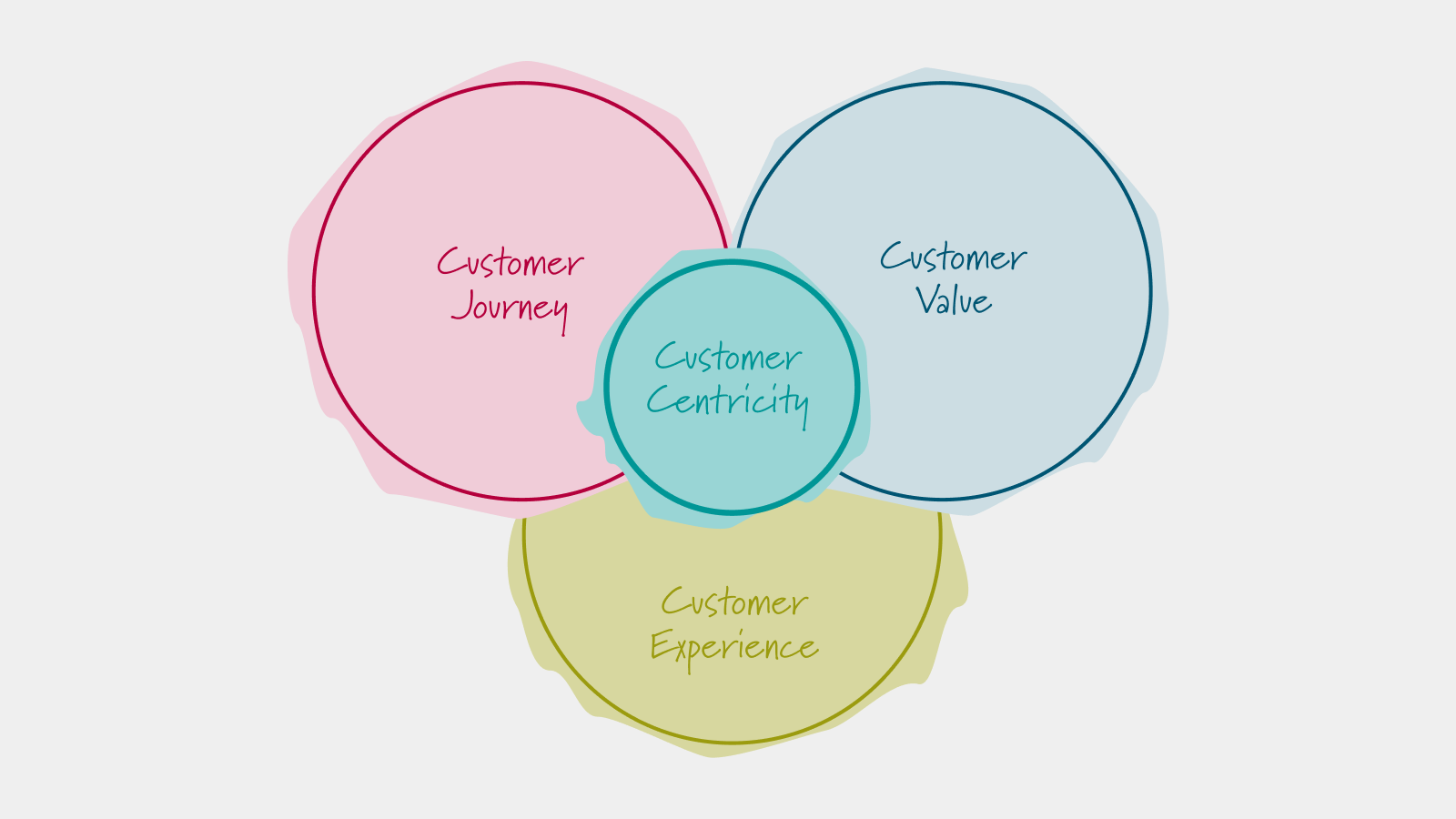
Mastering Complexity: The Importance Of An Agile Toolchain Using The Example Of Concept Development
The process of an agile toolchain and which programmes we use for it

Ognjen Manojlovic
21.4.2024
The development of a new product or service in a complex environment requires a systematic approach. A well-thought-out concept serves as a solid foundation and defines the purpose, goals and functionalities. The use of modern agile tools not only supports the conceptualisation process, but also facilitates collaboration and tracking during implementation. The continuous maintenance and adaptation of the concept as well as the effective implementation of requirements are crucial for success in a constantly changing digital landscape.
Introduction
The challenges associated with developing a new service or product in a complex environment require a focussed and systematic approach. The key to success lies in a well-defined concept that acts as a solid foundation for the development and delivery of the service. In this blog post, we will explore the essential importance of a clear concept in the context of launching a new service or product. We will take a look at the key steps in concept creation, how to effectively manage the development process in a complex environment and the benefits of modern agile tools.

A carefully developed concept gives the introduction of a new service a clear direction and defines a clear focus. It outlines the purpose, objectives, vision and scope. However, this does not mean that the end product must be described in detail in its entirety with all the associated functionalities. Quite the opposite. The details are defined, harmonised and implemented as part of agile development. The concept merely serves as the basis for the product backlog and describes the rough functionalities of the product. The clear definition of goals and desired results enables the development teams to focus specifically on delivering the intended benefits. However, without a clear concept, the implementation process can easily lose direction. This not only leads to confusion and delays, but also to inefficient use of resources. The concept acts as a guideline that keeps everyone involved at the same level of knowledge and drives implementation forward in a targeted manner.
A key point here is the flexibility of the concept. In the course of implementation, adjustments may prove necessary, be it after the development of a minimum viable product (MVP) or as part of user surveys and test phases.

Creating a concept is not a one-off task, but requires continuous maintenance and refinement. A product owner is usually responsible for keeping the concept up to date and making adjustments based on market trends, user feedback and evolving requirements. Close co-operation with the development teams ensures that all requirements are implemented effectively. Through regular meetings, progress reports and feedback sessions, the status of implementation can be closely monitored and potential challenges recognised and overcome at an early stage. This iterative and agile approach to concept maintenance enables dynamic adaptation to changes and ensures that the developed product always meets current requirements and expectations.

The structure of a concept document usually includes the overarching ideas, objectives and functional and non-functional requirements for the product. Although the specific structure may vary depending on the organisation and context, a general framework for structuring is presented below:
- Introduction: This section introduces the concept and provides an overview of the content and objectives of the document.
- Background: This section highlights the historical, organisational or contextual aspects that led to the creation of the concept.
- Target audience - personas: The definition of the target audience, including the creation of personas, helps to better understand the needs and requirements of the users.
- Process descriptions: This section includes detailed descriptions of the processes that will take place as part of the project or product.
- Key features and functionality: The functional and non-functional requirements that form the basis for development and implementation are defined here.
- User experience - UX: The user experience is the focus of this section and strategies are defined to ensure a positive user interaction.
- Scope and Limitations - Scope/Out of Scope: Clearly defined boundaries of the project are set here to clarify the scope and associated limitations.
- Risks: An analysis of the potential risks that may arise during implementation and appropriate mitigation measures.
- Schedule: A timeline for the implementation of the project or product is created here, setting out milestones and timeframes for each phase.
- Budget and resource plan: This section includes the planning of financial resources as well as the required human and technical resources for the successful realisation of the concept.
The clear structuring according to these points creates a comprehensive overview of the concept and serves as a guide for all those involved throughout the entire development process.
In the following sections, we will dive deeper into the concept creation phases and look at tools that can successfully guide the agile concept creation and development process in a complex environment.
Agile toolchain
Modern agile tools are an essential component for the management of complex projects and agile development teams. A well-designed agile toolchain combines a variety of tools and technologies based on agile principles. It significantly improves collaboration, transparency and productivity from brainstorming and concept creation to implementation and documentation. In this context, agile means that the tools are available online and follow the API-first approach. This means that the tools are accessible via an API and can be connected and integrated with each other. They also enable different teams in different regions to collaborate easily. Finally, agile tools help to react quickly to changes and keep an eye on the big picture.
The use of a modern toolchain plays a particularly important role in concept creation and subsequent implementation. In this blog post, I will present a tried-and-tested toolchain that I have successfully used in various concept and implementation projects. This toolchain consists of various tools, each of which is optimised for specific phases.
Idea generation, brainstorming and workshops
The use of collaborative and agile tools during the idea generation process is a significant enrichment for the creative process and contributes significantly to the development of innovative ideas. Various tools enable the creation of sticky notes, mind maps, graphic prototypes or collaborative whiteboards to capture and structure ideas. In this phase, I primarily rely on the tools Miro and Figma, which have proven to be particularly effective. Both not only offer efficient support for moderating workshops, but also promote joint and collaborative working.
Miro is a digital whiteboard tool that facilitates brainstorming, visualisation and collaboration between team members. Miro is particularly useful for moderating workshops, as it allows all participants to work on a shared whiteboard in real time.
Figma, on the other hand, is a web-based design and prototyping tool specialising in the creation of user interfaces (UI) and user experience (UX) designs. As a collaborative platform, Figma enables designers, developers and other stakeholders to work together simultaneously on design projects in real time.
The results from the workshops and brainstorming sessions must be formalised at the end of the day. This means that notes, process descriptions, requirements or architectural sketches must be prepared using suitable tools and, if necessary, made available for review.
In this first phase, it is very important to capture the ideas, results, decisions made and the next steps of the workshops in a suitable tool, document them and share them with the stakeholders and decision-makers.
Processes and architecture
The modelling of business and specialist processes plays a decisive role in understanding, improving and automating workflows. The modelled processes also form the basis for setting up a service or introducing a new product. Process images are indispensable for identifying and eliminating bottlenecks at an early stage. A widely used standard for process modelling is BPMN (Business Process Model and Notation).
The modelling of business and specialist processes can be facilitated by tools such as Signavio. Signavio enables the creation of visual models using standardised notations such as BPMN. The tool offers a user-friendly web interface with drag-and-drop functions that make it easy to create and customise process models.
In addition to process modelling, Signavio supports the use of ArchiMate, a widely used enterprise architecture modelling language. This support enables users to utilise the functionality of ArchiMate within the Signavio platform. By integrating ArchiMate, companies can model, analyse and visualise their enterprise architecture, leading to improved understanding, better alignment and more informed decisions.
However, as Signavio is associated with considerable licence costs, there are also various low-cost or free alternatives such as Camunda or Archi available for this purpose.
Requirements and work management
The aim of requirements elicitation is to identify, document and prioritise product requirements. A deep understanding of the needs and expectations of the stakeholders is crucial here. By using proven techniques such as interviews, workshops and surveys, requirements can be captured and analysed effectively.
Jira and Confluence can be used to document and manage requirements. The requirements that arise during concept creation should ideally be recorded as Jira Issues. In this way, they can be effectively used or reused in the course of development or as product backlogs. Confluence acts as a central knowledge hub for documentation and project-related information. As a rule, it is desirable to have a concept that is accessible to everyone, always up to date and easy to understand. It is therefore advisable to integrate Jira issues or requirements into Confluence so that they can be easily read as continuous text without having to view each Jira ticket separately. An alternative way to present the requirements in a structured form is to use Structure. Structure is a Jira plugin that allows the user to organise issues hierarchically in a ‘folder-like’ structure. The plugin also offers a number of other useful functions that are not available as standard in Jira.
Roadmapping
Jira supports roadmapping and scheduling with the standard ‘Timeline’ functionality and the ‘Plans’ extension. These tools enable a clear chronological visualisation of processes, especially in a multi-project context.
The ‘Timeline’ function is available in all Jira Plans, both in the Cloud and Data Centre versions. Jira Plans is currently only available for Jira Premium customers. While the timeline functionality is limited to one Jira project, Jira Plans acts as a portfolio tool and enables the visualisation of multiple projects on a common timeline.
Existing requirements that have already been captured in Jira can be placed on a timeline to create a first draft of a roadmap for product development. This roadmap provides product management and development with a clear overview of upcoming activities and helps to keep track of all details. The roadmap is a dynamic product that is continuously adapted during the elaboration and development process.
The requirements identified in the concept can be broken down further into smaller units, often in the form of user stories for development. The links available in Jira make it easy to trace the relationships between individual processes and track their development.
In addition, the estimated costs, effort and resources required for implementation can be recorded in the individual processes so that this information is visible on the roadmap at all times.
Overall, this is an extremely useful functionality that undoubtedly makes a significant contribution to effective implementation planning.

Conclusion
Creating a concept for a new digital product in a complex environment requires a clearly defined approach and effective management. Active participation in the creation of the concept, stakeholder management and requirements management lay a solid foundation for successful implementation. The clear definition of purpose, goals and functionalities in the concept phase not only enables targeted development, but also creates transparency and unity among those involved. The use of modern agile tools not only supports the conceptualisation process, but also facilitates collaboration, communication and tracking throughout the implementation. Maintaining the concept and implementing the requirements is the key role of project or product management to ensure that the end product meets expectations and can react flexibly to changes. Overall, a systematic approach to concept development and implementation, even in an agile world, is crucial to the success of a project in a constantly changing digital landscape.
Workshops
Resources
All Rights Reserved.


